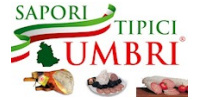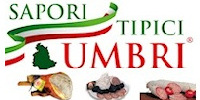 |
| Palio delle barche |
***image3right***Originally built by the Londobards, the fortress dates back to the 5th or 6th century and functioned as the nucleus of a much larger castle that grew in three different moments to such proportions that it extended to the water’s edge. Today there remains only the 14th century triangular clock tower, some of the bastions and large sections of walls. In 1488 this castle was the setting for the concluding episode in a long and bloody feud between the Oddi and the Della Corgna families, an event that is still remembered today in the Palio delle Barche in the last Sunday of July. Driven out of Perugia, the Oddi took refuge at the castle of Passignano. When the Baglioni and Della Corgna families besieged the fortress, the family attempted to escape on boats that had been sent for their rescue from the islands. When the boats sent by the islanders were driven off the shore by the troops of the besieging families, the Oddi had no choice but to opt for the less dignified solution of sneaking out of the castle carrying their own boats on their shoulders.
 |
| Veduta dal pontile |
Along the road to Tuoro, which runs next to the town, stands the sanctuary of the Madonna dell’Uliveto. Consecrated in the early 17th century, the building was erected on the ruins of the previously existing monastery of San Vincenzo, to honour a sacred image of the Madonna with Child and Two Angels attributed to Bartolomeo Caporali. The sanctuary contains a fine holy water trough by Ascanio da Cortona (1602), as well as some canvases by Salvio Savini and Virgilio Nucci. The majestic corinthian altar, with its polychrome marble decorations, is by the Cortona artist Mariotto Radi. The sacristy contains a collection of fine church furnishings.
In the following valley, still along the road towards Tuoro, an imposing avenue lined with cypress trees turns off the main road and leads to the Fattoria del Pischiello. This villa was built by order of the Marchese Uguccione Ranieri-Bourbon di Sorbello, in the 18th century, in the middle of the vast tracts of land that once belonged to the fortified manor of Bastia Corgna. The manor and its land had been created in the 14th century by Perugia, as a defence for its northern borders. The villa itself takes its name from the water spring that supplies water to the large tank beneath the entrance stairway. Behind the villa there is a small hamlet for the serfs who worked on the land. There is the house of the farmer, the blacksmith, the oil mill and the chapel of San Damiano.
Coming along the highway from Perugia-Magione, exit at Torricella and follow the road to the turning for Castel Rigone.
 |
| Ruderi Terme Romane |
The road then winds upwards towards the town of Castel Rigone itself, at 653 metres above sea level. Once a powerful fortress, today there remains the main tower along with three bastions, a good section of walls and two of the entrance gates.
In mid August there is the Giostra di Arrigo, the only event of its kind in Italy to be held in Gothic dress. A lieutenant of the Goth king Totila, Arrigo (or Rigo, hence Rigone) used the castle as a base for his siege of Perugia in 547.
 |
| Maria Santissima dei Miracoli |








